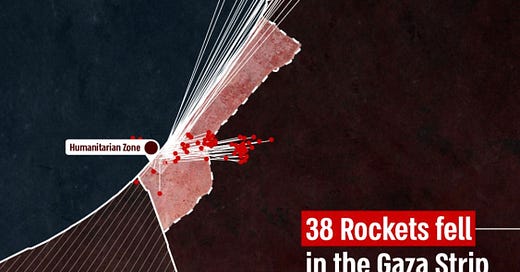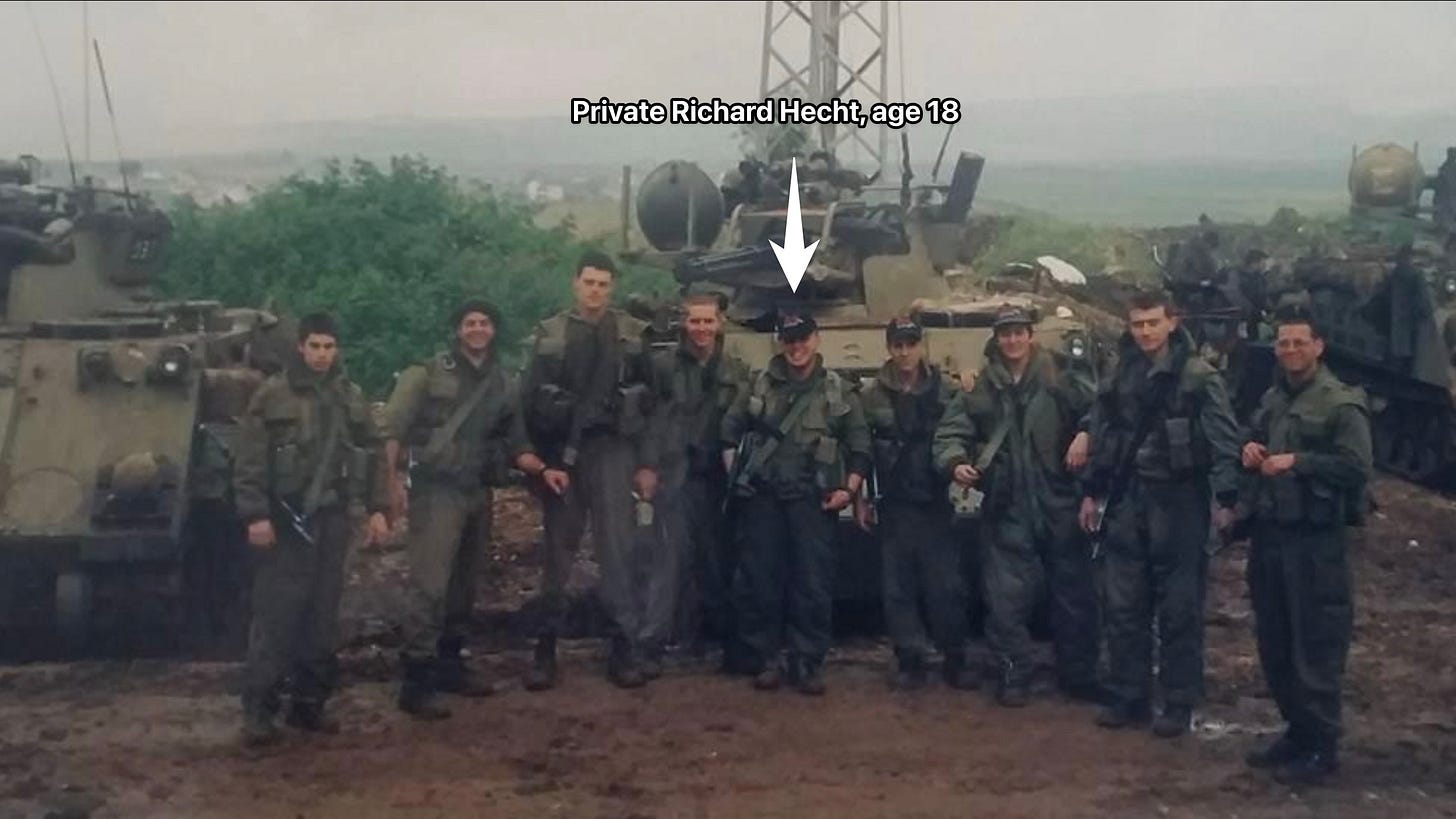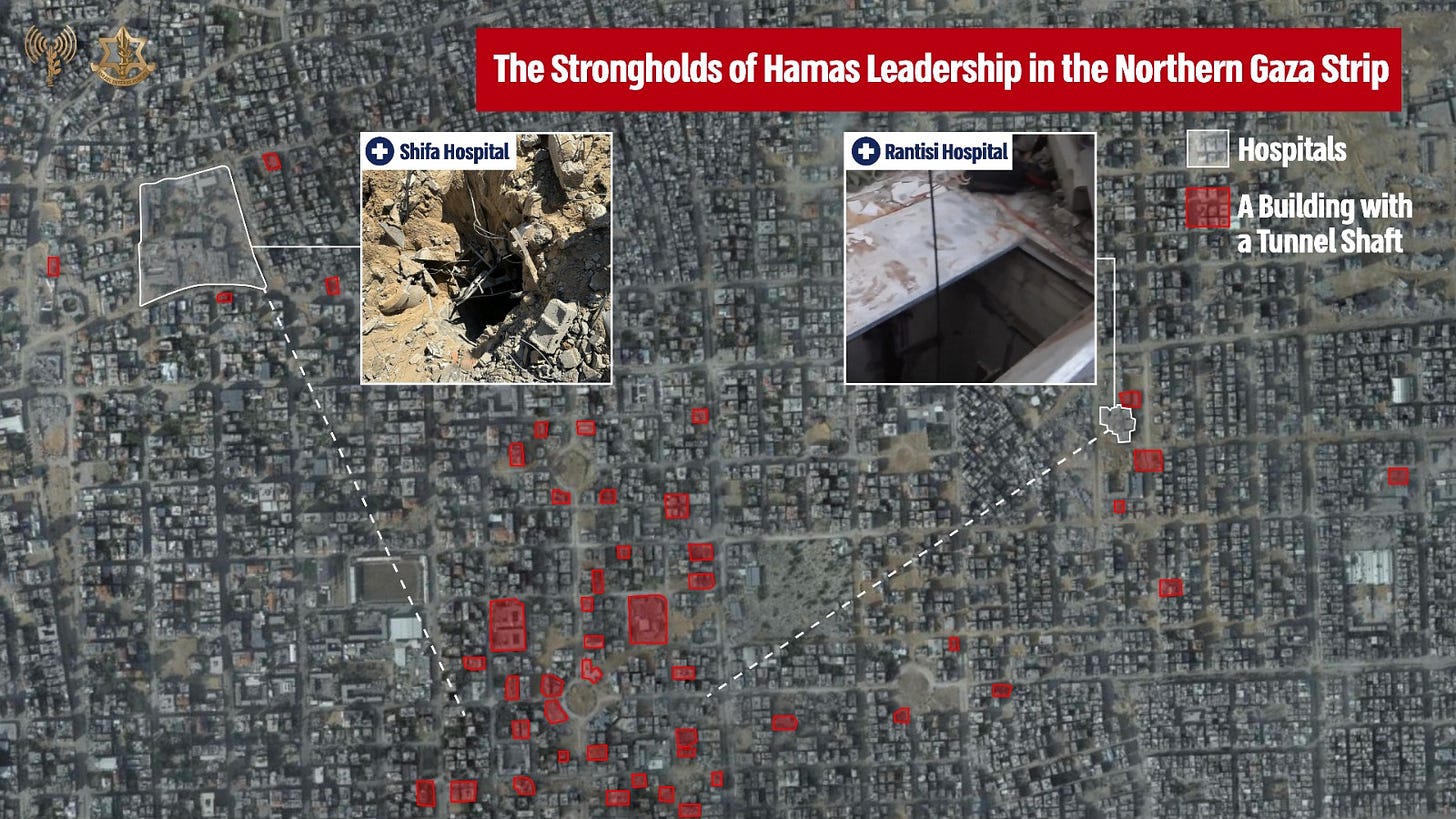Fighting (Rocket) Fire with (Rocket) Fire
From Active Missile Defense to Active Operations in Southern Gaza
In today’s newsletter, I’ll share a little bit about our view on defending from the ongoing rocket attacks on Israel, update on a major tunnel network exposed in downtown Gaza, and share some operational updates. But first, if this is your first time reading this, don’t forget to subscribe below.
Very Active Missile Defense
The IDF takes its acronym - Israel Defense Forces - very seriously. As October 7th tragically proved, Israel needs defending from a wide range of threats.
Uniquely, Israel's homefront - civilians - are frequently the target here.
I shared in a previous post how the rocket threat from Gaza emerged - slowly and then rapidly - with a major terrorist effort to smuggle and develop military-grade rockets that can attack anywhere in Israel.
We address these threats with a three-prong approach:
Stop the attack before they happen: If we can identify a rocket launch pad - or a rocket launching crew about to launch a rocket - we try to get in there first.
Civil defense (aka concrete rooms): Beginning in 1950, every building in New York had a required number of parking spots. In Israel, since 1992, every building needs a fortified safe room. Because Israeli civilian buildings are typically the target.
Technology. Israel is a world leader in active missile defense - another way of saying that the IDF is able to literally shoot missiles out of the sky, whether short-range Qassam rockets or long-range cruise missiles. This relies on an extensive network of different systems and is prohibitively expensive…but we put our money where our values are.
I’m proud of how we do this.
During IDF operational activity, we abort strikes when we see unexpected civilian presence. You can see an example of this below.
But Hamas intentionally invests in attacking Israeli civilians…so we invest in intercepting those rockets. Even the locations from which they fire these rockets reflect their approach. Approximately 900 launches were carried out from civilian sites such as mosques, schools, hospitals and cultural centers…and more recently, from the humanitarian safer zone in southern Gaza. Here’s a map of the rocket trajectory of the 116 rockets launched from the humanitarian zone since it opened on October 18.
So let’s talk about the Israeli Air Force’s role in Aerial Defense.
In the complex arena of modern aerial warfare, the Israeli Air Force (IAF) plays a pivotal role in safeguarding the nation's skies. Here’s one bada** way it happens:
Below is an F-35i “Adir” - one of the most sophisticated airplanes in the world - shooting a cruise missile down southeast of Israel.
But where it’s really at is the active missile defense systems, most famous of which is the Iron Dome, which can intercept short-range rockets too.
Just think about it for a second.
In just seconds, a rocket is launched, a radar system detects its trajectory, assesses whether it should be intercepted, and a rocket is launched to blow it up in mid-air.
Front and Center This War
Active missile defense has played a key role in this war. Over 10,000 rockets have been fired at Israel so far. While about 10% are failed launches that land inside Gaza, huge numbers of the others must be intercepted to save lives.
In this war, the Israeli Air Forces Aerial Defense Array has been deployed more extensively than ever before, carrying out interceptions from Mt. Dov in the north to the Red Sea in the south, including:
Iron Dome
David's Sling
MIM-104 Patriot
Arrow
While the Arrow is the newest to join the active missile defense, the Iron Dome may be the most popular, having saved thousands of lives over the last twelve years.
Each battery has several dozen soldiers in tents, with modest living conditions characterized by the need to maintain mobility, picking up and moving at any moment given the fluid nature of security priorities in the country. An electric generator and some prefabricated buildings form the battery’s facilities housing the soldiers who remain constantly vigilant in order to protect Israeli homes.
The result? The IAF has intercepted thousands of rockets over the past seventy six days. And with more enemies using UAVs, active missile defense has played a larger role in intercepting these threats as well.
The array's successes were realized, among other things, as a result of the deep cooperation effort between the IDF and the defense industries, as well as between the IDF and the United States Armed Forces, which are force multipliers in this war.
By the way, I served in the Air Force’s air defense corp back in 1994 (and have the old picture to prove it):
Below the ground too
Yesterday, the IDF released footage of a massive network of tunnels in downtown Gaza. The system included a huge 150-meter hall, access points camouflaged in an eyeglasses store in Palestine Square, and much, much more.
It’s hard to understand just how extensive this is…or how central it is. Imagine massive tunnels under Times Square in New York or 9 de Julio in Buenos Aires, all dedicated to terrorism.
Here’s a small taste of what it looks like.
Operational Update
The 99th Division expanded the IDF’s operational activity to south of Gaza City, neutralizing hundreds of terrorists, and discovering weapons concealed in children's dolls in Bakshi. Soldiers from the 179th and 646th Brigades successfully eliminated terrorists, destroyed rocket launchers and other military gear.
Other IDF activities included striking a terrorist compound in Khan Yunis, striking terrorist-operated vessels in Gaza, and eliminating terrorists in Al-Shati. Over 230 terror targets in Gaza were struck by IDF aircraft.
On the northern front, IAF fighter jets and IDF tanks and artillery responded to Hezbollah attacks by targeting military structures, launch posts, and infrastructure in Lebanon. Hezbollah launches towards Dovev, Avivim, and Har Dov resulted in two Israeli civilians being lightly injured. An IAF aircraft neutralized a terrorist cell responsible for launches towards Arab al-Aramshe.
On the humanitarian front, a Red Crescent hospital in Rafah is expected to begin recieving patients in the coming days. In addition, the first phase of establishing a water line from mobile desalination facilities in Egypt was completed. As of December 17, UN trucks have are able to undergo security checks and enter Gaza directly via Kerem Shalom, increasing the daily volume of humanitarian aid entering Gaza. Yesterday 166 humanitarian aid trucks were inspected and transferred to the Gaza Strip, 91 trucks via Nitzana/Rafah Crossing and 65 via Kerem Shalom.
Quote of the Day
“We are in an additional significant phase of strikes in new areas where we are currently operating with force…it will continue onward, with pressure on the enemy above ground, and below ground”
Commander of the Southern Command, MG Yaron Finkelman, while in Khan Yunis with the forces of the 98th Division yesterday (Wednesday)
Here’s to a quieter weekend.
Richard







Wow, I didn't realize that you're 47! I would have thought you were in your low-mid 30s. You really look young!
Can you tell us more about flooding the tunnels?